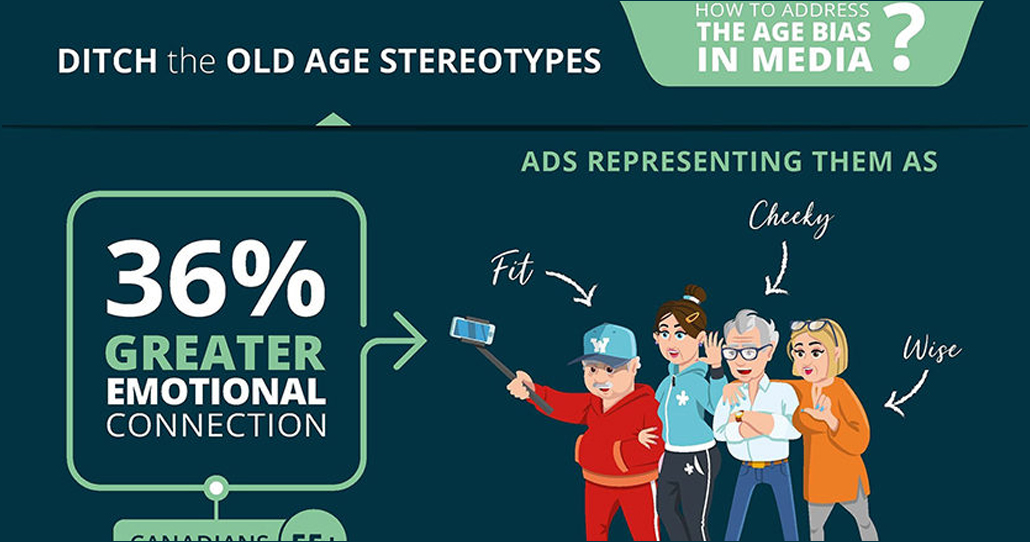The research is in: it seems many of us don’t know the 55+ Canadian as well as we think we do. In fact, a recent Brainsights study showed that the age bias is causing most marketers to completely miss the mark when addressing this demographic. With 11 million Canadians falling into the fastest growing consumer segment, knowing the rules of engagement just makes good business sense. Unsure whether you judge this demographic incorrectly, read this article too to find out – “Is Youngsplaining the new Mansplaining?”
Follow the rules below to set yourself apart and get your message heard from this demographic.
DON’T use stereotypical labels. A 2018 IPSOS study revealed that nearly 80% of Canadians 55+ disliked the label Senior. A mere 19% preferred the term Boomer, 11% preferred the term Retiree, 20% preferred the term Older Adult, and not surprisingly 0% liked being called Elderly. Most importantly, 30% preferred no label at all!2
- Stay away from using labels in your marketing pitch. So get creative and instead refer to lifestyle, interests and values – rather than defining them by their age group
DON’T portray them as elderly and frail. Canadians 55+ are living longer with active and healthier lives than ever before thanks to medical advances. They’re capable, enthusiastic, adventurous and empowered. Savvy businesses will represent them in the same manner they see themselves.
- Choose appropriate photos for your marketing materials
- Direct conversations around adventures that lie ahead: bucket lists, travel, large purchases
DON’T treat them as helpless and confused. This group is well educated, intelligent and capable. Many are still in the workforce with no immediate plans to exit. They are not only planning for their own retirement but in many cases are helping children and grandchildren plan their futures. They revel in clever humour that pokes fun at ageist stereotypes and accurate representations of their many capabilities.
Watch the video below to see an example in action.
DON’T focus only on what lies ahead. Some 55+ Canadians are unsure how they will fit into their new retirement reality. In this sea of uncertainty, nostalgia tends to be a kind of anchor that provides reassurance. Generation-tailored nostalgia resonates well with this group.
- Talk about the past and those milestones that took place in their home
- Probe about favourite places to travel
- Know your references and pepper conversations with mentions of music, movies, historical events, or sports they could relate to
DON’T ignore the children. Teaching their children is important for the 55+ group. They want to serve as a good example for future generations while setting them up for success.
- Probe about children and grandchildren they want to help financially with a down payment for a home or tuition costs
- Reinforce the idea that with the CHIP Reverse Mortgage, your clients can help setup their children for success and remain financially independent
DON’T engage in information overload. Science proves that as we age, we require more cognitive resources to process information. So, while the 55+ group likes information, it needs to be presented in smaller chunks. This may mean several conversations, leaving time for clients to digest what they’ve just heard.
- Follow up each meeting by phone or email to see if they have any questions
DON’T label, enable. The moral here is clear: Employing ageist biases with your 55+ clients risks alienating them. And that could mean leaving a lot of lost revenue on the table. Knowing your clients and how to help empower them will only help make you more successful in the long run.
Click here to download the complete Brainsights study!
Sources:
1Statistics Canada
22018 IPSOS study








